Greenhouses on the windowsill and balcony: options for home greenhouses
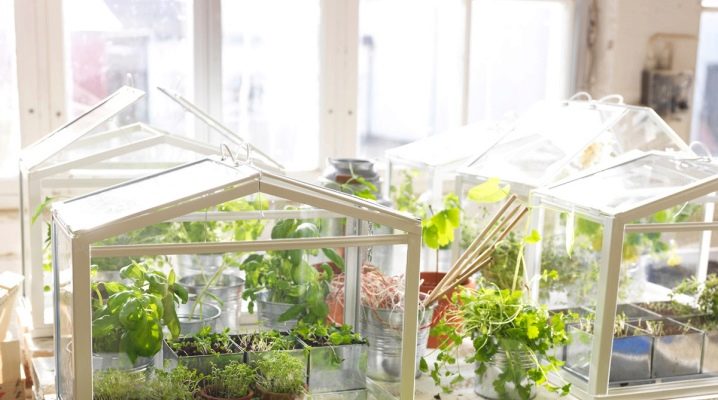
Very often in winter, you want to pamper yourself with fresh vegetables or even fruits, but due to the unsuitable season you have to buy products brought from distant countries. However, if you make a small greenhouse at home (on a windowsill or balcony), you can realize what you want and eat something not just fresh, but also natural, grown by your own hands. In addition, you can already start preparing for the summer season and get good seedlings, which will bear fruit faster.
Purpose and dignity
Now in stores you can buy almost any product you can wish for, but it is difficult to say for sure whether their quality corresponds to the desired one. It is not known exactly how these or those vegetables or fruits were grown, how long and by what means the greens were germinated, which should carry the richness of vitamins into the body. All this causes a desire to independently grow everything that will get into food.
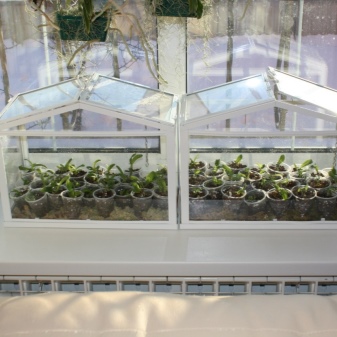

In the summer, this will not be difficult, because in the garden, under the scorching sun and with timely watering, any products will grow quickly and will soon give the long-awaited harvest. But what to do in winter, when it is impossible to grow anything on the street and you have to be content with only purchased items? In this case, home greenhouses can help. You can create a greenhouse on a windowsill or on a balcony quickly enough and get the first results in a short time.

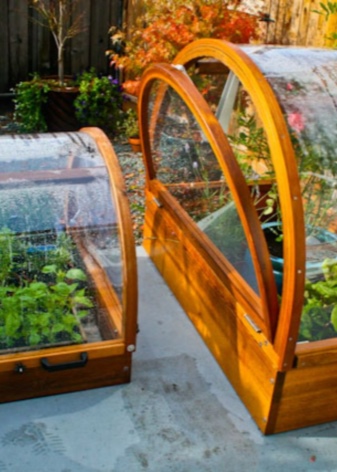
A wide variety of objects can be used to create a microsteam at home. The main principle of such a greenhouse is to create a suitable microclimate inside the structure, which is achieved by isolating the garden area from the outside world. Most often, polyethylene is used for this: they wrap the area with the ground with it. But you can also use improvised materials in the form of a plastic bottle with a cut off bottom: if you put it on a pot of soil, you can achieve the effect of a greenhouse.
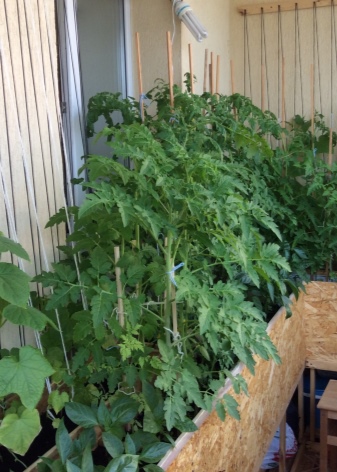
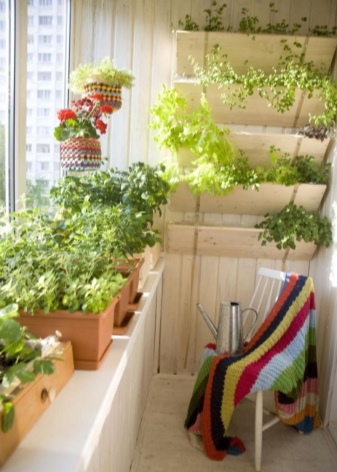
Now there is an opportunity to purchase greenhouses in stores. They are completely ready-made and do not require any additional work, except for assembling the main frame and installing the film around it. Externally, micro-greenhouses may differ from each other, but they have one task - the ability to have fresh food and greens all year round, as well as prepare seedlings for the next summer season.

Requirements for home greenhouses
Regardless of how exactly the greenhouse will look like, purchased or homemade, for its manufacture or operation there are certain rules and requirements that you need to know, otherwise the result of growing green spaces in such objects will not have the desired result.
- Creation of the most suitable conditions for the plant that is being grown. It is not worth putting crops in one greenhouse that need different growing conditions.
- The greenhouse should be easy to use, so that it can be washed at any time, something in it can be changed and corrected. All plantings should be visible, well visible from all sides and have easy access for irrigation.


- In addition to convenience, it would be nice if the appearance of the greenhouse was aesthetically pleasing and suited to the design of the room.
- An indoor greenhouse must be sturdy enough to withstand multiple uses.
- The location of the micro-greenhouse should be such that the plants receive enough light, but at the same time they do not take all of it from the room.
- The best place to locate the house for future plants will be the window of the room where people are rarely found, which means that the loss of light from the greenhouse installation will not affect the living standards of households in any way.
- If it is not possible to find such a zone in the house, you can organize a greenhouse place in any place convenient for everyone, but provide artificial lighting so that the plants can grow and develop correctly.
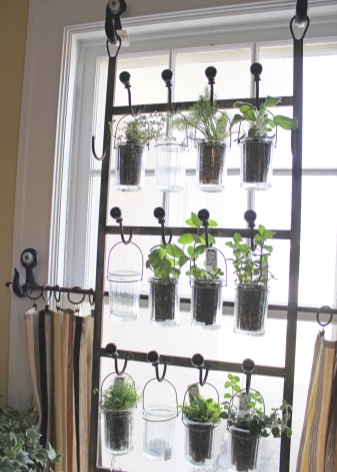
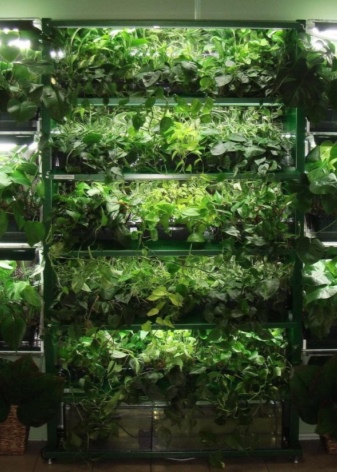
Following these rules, you can get a good greenhouse, which in the shortest possible time will pamper you with fresh herbs or other fruits.
Types of mini greenhouses
If you are thinking about creating a greenhouse at home in order to be able to grow fresh greens and prepare seedlings for planting on a summer cottage, you need to consider all types of modern structures and decide which one will be most convenient in a particular room. For an apartment, the most successful location for a greenhouse for young plants will be a window opening, on which you can build both racks and a small greenhouse.

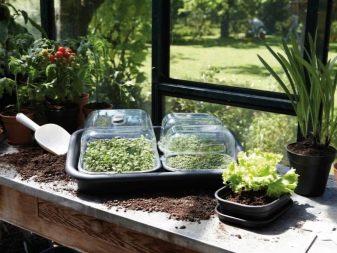
Parsley, dill or onions are usually grown on the window., what is most commonly used in food. If the task of the greenhouse is to grow seedlings for the garden, then it is most convenient to take the entire structure to the balcony. In this case, you can afford a more bulky greenhouse, where it is possible to arrange a large number of trays with soil, where the seeds will already be sown. A balcony greenhouse will give results when all the conditions for the growth and development of plants are present. If there is not enough light or the air temperature is below normal, then seed growth will be difficult, if not impossible.
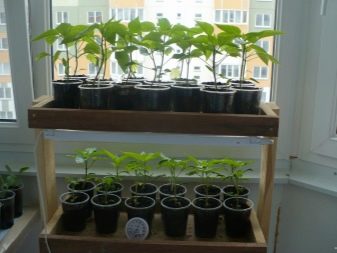
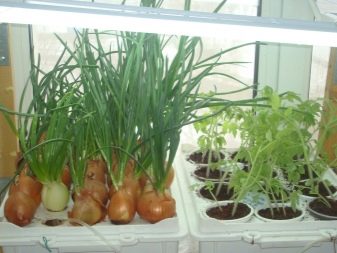
Simple greenhouse designs
To create a greenhouse at home, you can buy a simple greenhouse and start growing any greenery. The simplest design involves a reduced variation of summer cottages, where, instead of a large room made of polyethylene or glass, there is a small rack on which a special polyethylene cover is put on. Usually the rack frame is made of metal, but at home you can also make a wooden version. For ease of maintenance and watering, the polyethylene cape has zippers. By unfastening them, you can reach the desired area without exposing the entire greenhouse.
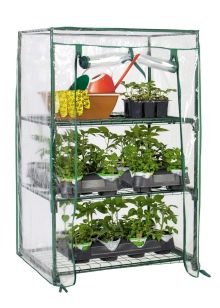
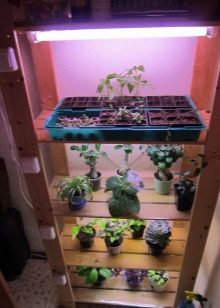

Shelves can have a wide variety of dimensions, which are selected individually, based on the availability of free space at home. The height may also differ, depending on the tiers of the structure, there may be two or more of them. Usually, they do not use racks with more than five shelves, because it is difficult to care for plants and view their condition.
If there is no need for a large greenhouse, you can use a tabletop type, which is somewhat reminiscent of an aquarium, but is made according to the principle of window frames for outdoor structures made of polystyrene. If there is a desire to purchase something more powerful, then automatic systems will be most productive in this case.
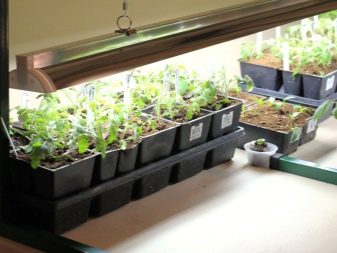

Automatic
If a simple design is a home for plants, where a comfortable temperature is created for them, and a person does all the care, then automated greenhouses take over these functions. Such systems can be partial (with a certain set of functions) or complete, where a person does not participate at all in the process of caring for plants. These devices have phytolamps that provide the necessary light for growth; automatic irrigation system that allows you to dose the supply of moisture; ventilation that renews the air and provides the full range of conditions that are necessary for the proper growth of plants.

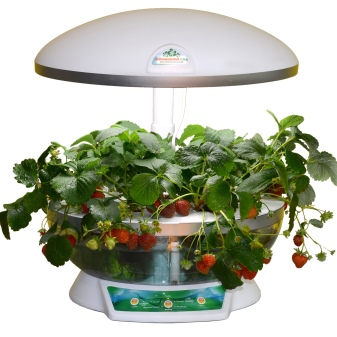
The advantages of such systems are that there is no need to look for a convenient or suitable place for them, since they will cope with any location, be it a window sill or a basement.
There are several options for such automatic greenhouses.
- Growboxes Is a closed system with autonomous lighting, air supply, light reflection.An important feature is the ability to choose the type of operation of the device, depending on what exactly will be grown in it. Plants can be planted in such a box both in a nutrient mixture and in hydroponics.
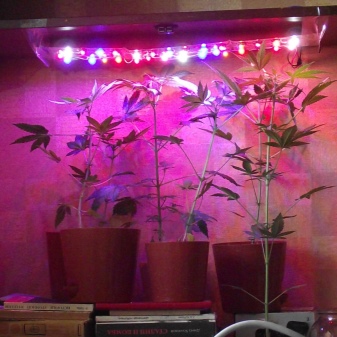
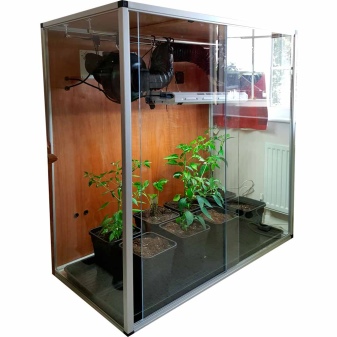
- Thermoboxes convenient to use in apartments. They can be placed both indoors and on the balcony. This device is not afraid even of negative temperatures and can independently adjust the microclimate inside so that the seedlings are comfortable. The device independently waters the plants, monitors the supply of nutrients, turns on and off the lamps at the required time. You just need to place the seeds in the box, and then the machine will do everything by itself.
- Airgarden is a desktop mini-greenhouse where greenery grows using aeroponics (drops of solution with nutrients in which the root system of seedlings is located). The device not only helps to create ideal conditions for growth, but even speeds it up several times, so that you can get the finished product much faster.


Lighting
For the normal growth of any plant at home, it is important to create a suitable habitat for them. The most important factor will be lighting, which should ideally be natural. So that the seedlings can receive sunlight, it is best to place them on a windowsill. If the side of the house does not allow receiving the proper amount of light, then it can be compensated for with a special lamp. With its help, you can get out of the situation when the seedlings are in a dark room.

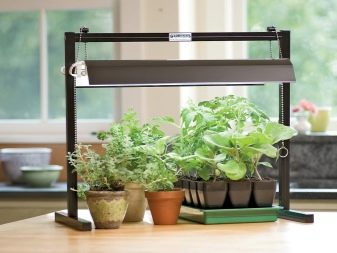
The most convenient way to install the greenhouse is on the balcony., because there is a completely glazed room and the light hits the plants as often as possible, which ultimately gives a good result. You can grow almost any plant at home, the main thing is to know what environmental conditions are typical for it, and try to make them. To grow exotic fruits in a room, an automatic greenhouse will be required, because exactly how it can provide all the components for growth, and this is light, and moisture, and air.
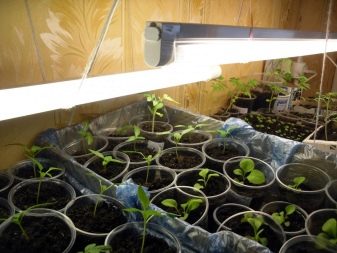
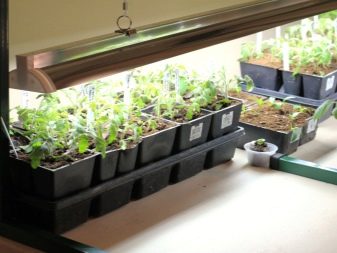
Unlike the human body, plants need a red segment in order to grow, develop and flower. The waves must also be of appropriate length, which is between 600 and 700 nanometers. In addition, the blue spectrum is also important, the wavelength of which should be from 400 to 500 nanometers, which will make it possible to vegetatively grow and develop the seedlings correctly. Simple artificial lighting will be insufficient and instead of benefit will cause a state of stress in a young plant, therefore it is important to select light in the spectrum of sunlight. If we neglect this, then fruits and vegetables grown in such conditions will have a different taste, lose most of their vitamins, and sometimes may be completely unsuitable for eating. If we are talking about flowers, then in this case the effect is the opposite: from artificial light their growth increases, and the flowering becomes brighter.

To ensure good growth and development of plants in the greenhouse, it is important to choose the right light in which the radiation of the corresponding color will be:
- purple or blue helps photosynthesis - plants become stronger and begin to grow faster;
- yellow and green contribute to the suppression of the process of photosynthesis, and this causes plant diseases;
- orange or red are most suitable in the process of flowering and active development of fruits, but you should be careful with the amount, because the harvest dies from a significant dose of this light;
- ultraviolet radiation helps to accumulate a sufficient amount of vitamins in plants, in addition, increases resistance to cold.
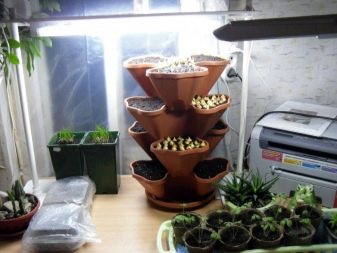
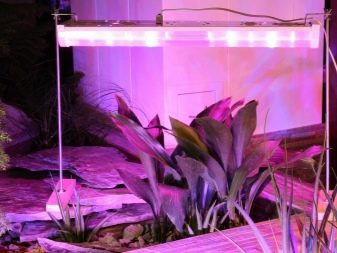
If there is a need to use lamps, then you need to understand the difference between them.
- Incandescent lamps they light up well and warm up the air a little, but they consume a lot of electricity.Their spectrum is 600 nv, which does not correspond to the norm for plant growth - burns or deformation of the stems may appear on the leaves.
- Fluorescent lamps favorable for growing plants, because they have low heat transfer. In addition, they are inexpensive and do not consume a lot of energy.
- UV lamps work in much the same way as fluorescent, but by adding a variety of components, you can choose the appropriate range for a particular plant.
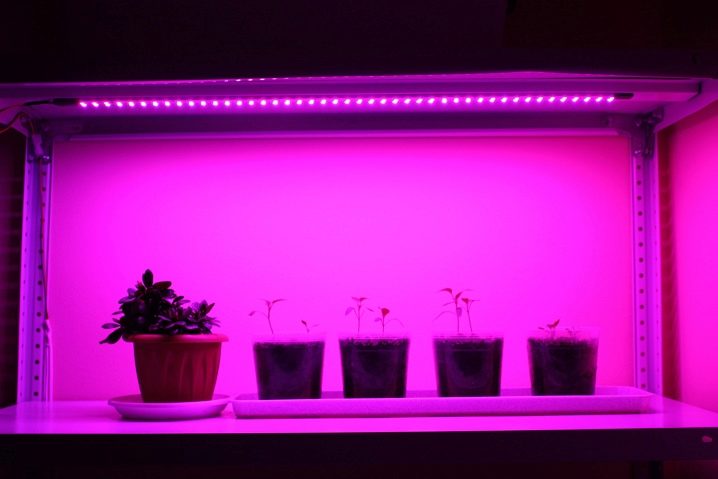
- Mercury lamps have high pressure and heat up quickly. The rays have a near ultraviolet spectrum. It can be used for photosynthesis, but in small doses. Best used when the fruit begins to ripen. You can use them if there is a stable voltage in the network, without drops, otherwise it is dangerous.
- LED lamp create monochrome lighting. If you use a combination and different color combinations, you can get the desired spectrum. These lamps are economical, last long and do not deteriorate even at low voltage.
- Infrared lamps are used to heat the air in the greenhouse. They are energy-consuming, but they have a beneficial effect on plants, their light is similar to natural.
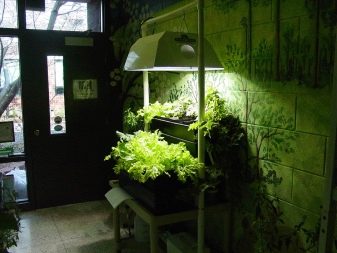
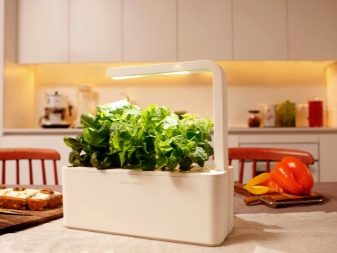
Lighting is calculated depending on a number of factors: this is the area of the greenhouse, the height of the lamps above the plants, the types of lamps, the season, the type of plant.
How and what to make: options
In addition to buying a finished greenhouse, you can do it yourself at home. It can be a small structure or a voluminous rack, it all depends on what exactly will be grown. For an orchid or other flowers that need to germinate from seeds or bulbs, plastic bottles are suitable: they are cut into pieces and a greenhouse is assembled from them. The lower part serves as a base where you can pour soil or put peat tablets, and the upper part is put on the plant and creates a suitable microclimate. It can be easily removed for ventilation and watering.
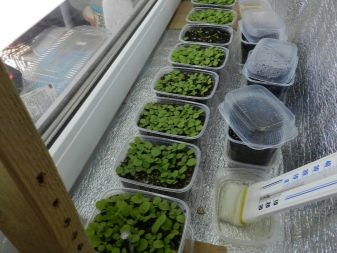
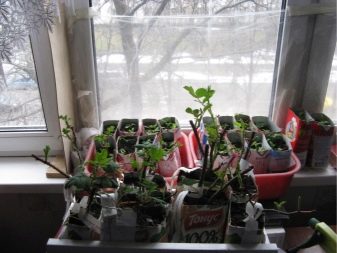
If you need to grow more plants, you can use an old aquarium.where there are glass walls and a cover that allow sunlight or artificial light to pass through well. If the aquarium itself is not there, any box covered with glass will do, through which the necessary light will break through. The most difficult thing is to create a shelving greenhouse, but the yield will be much larger than with any of the above options.
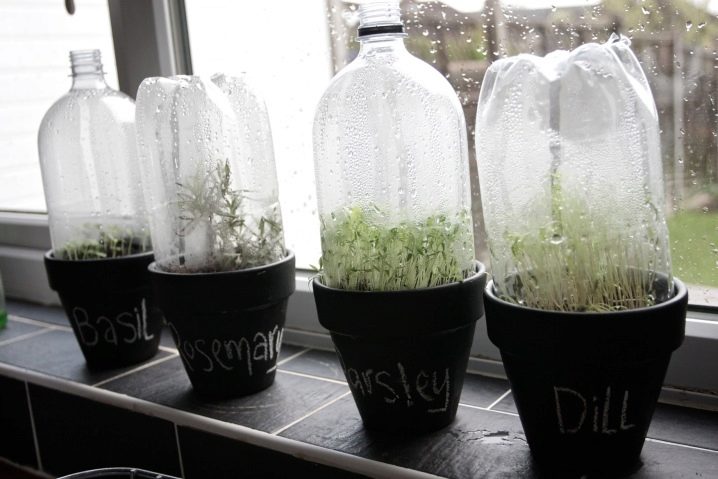
To create a rack, you need to think over its dimensions and materials from which it will be made. It is best to use plexiglass for the shelves, but you can also replace it with ordinary chipboard or plywood. On the finished case, you need to put on a plastic cape with zippers or think over another option, how to quickly get inside for watering. It is imperative to make such a rack illuminated from above in order to always be able to compensate for the lack of sunlight.
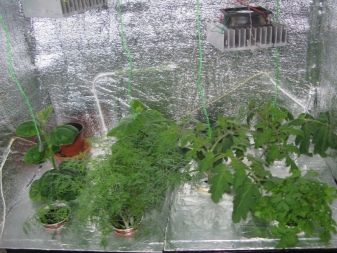
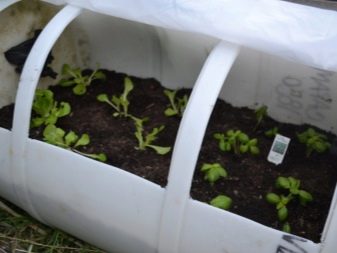
If there is a lot of germinated culture, then it is most convenient to use a rack., since here everything can be watered and ventilated at one time. The same applies to lighting: if there are transparent shelves, it evenly hits all plants. The rack itself can be of any size and dimensions, depending on the availability of space in the room and the number of crops for germination. The design with three plexiglass inserts will be the most optimal, because it does not take up much space, it will be convenient to care for it, and all plants will have the same and optimal germination conditions.
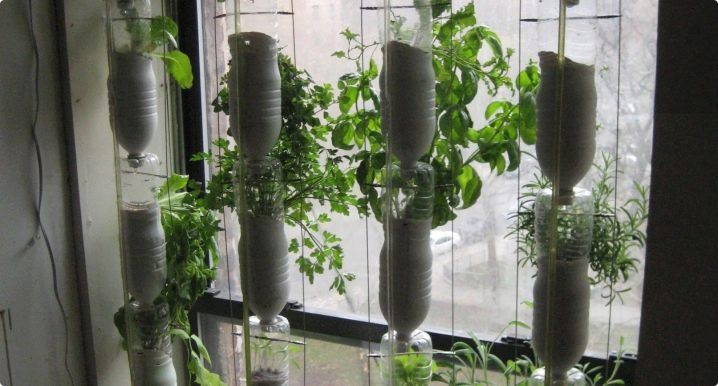
Recommendations
When stirring seedlings in greenhouses on the windows, it is important to have blinds or other system for protecting young shoots from the sun, the amount of which must be correctly dosed, otherwise the young leaves may simply burn out.If it is not possible to devote a lot of time to a self-made greenhouse, you can partially automate it; for this, a device is selected for automatic ventilation, lighting and watering.
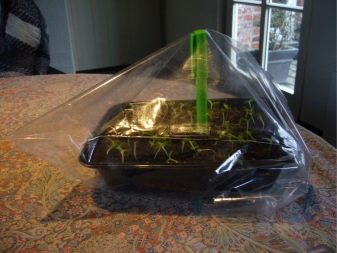
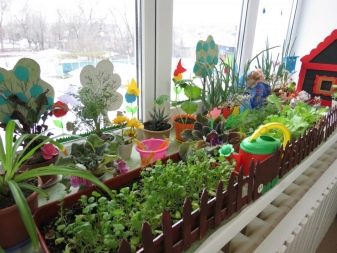
If you need to enhance plant nutrition, it is good to use hydro and aeroponics.which have a quick effect: plants develop at an accelerated rate and grow healthy and strong. It is better to make a window for ventilation and watering on top of the structure, so that the air inside evenly escapes, mixing with the existing one in the room and replaced by a new, fresh and clean one. If you make such a window at the bottom, the incoming fresh air will be cold, which will negatively affect immature plants.
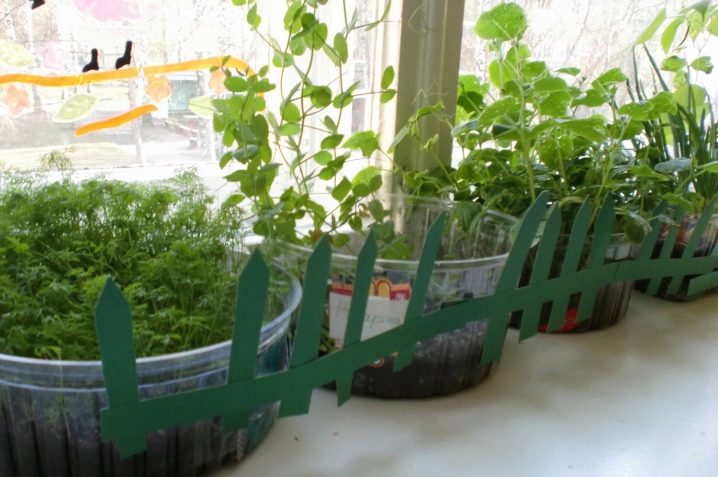
For information on the options for home greenhouses, see the next video.





























































The comment was sent successfully.